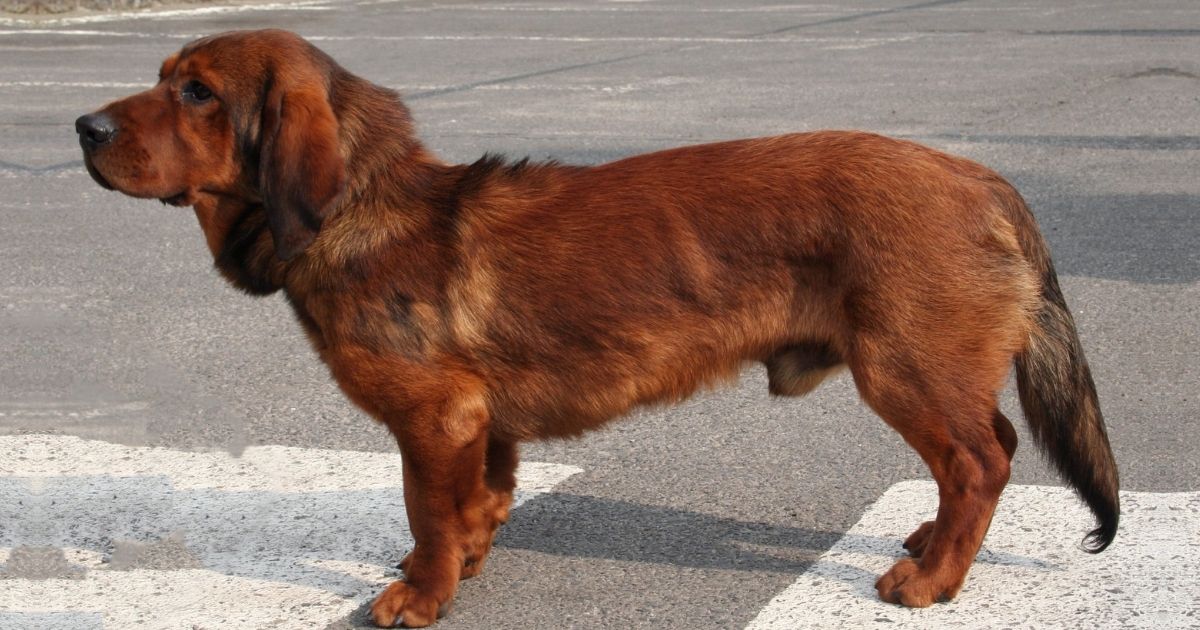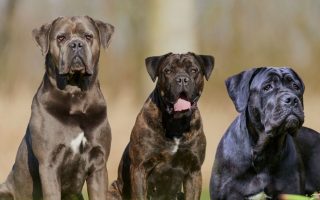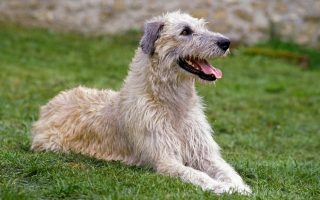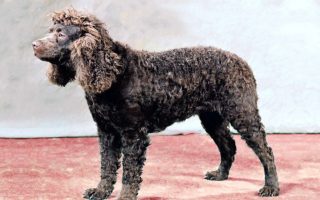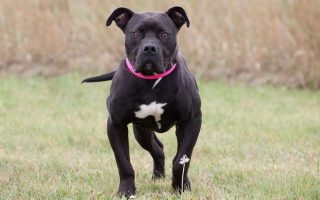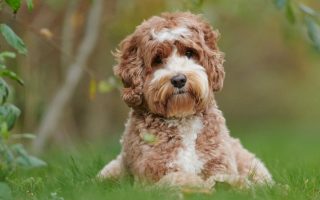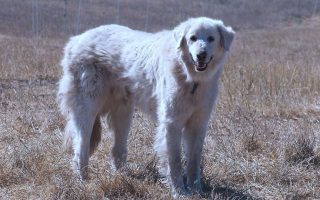A hunter with short legs and nose pointed to the ground, the Alpine Dachsbracke is a scenthound on steroids.
Coming from a lineage of formidable hunters, the Alpine is a big enemy of forest prey, but a friend to humans.
He worked with both nobles and common men. Now, he dwells in the house of the modern American, where he shares and receives love.
This article takes a look at Alpine Dachsbracke dog breed facts, information, characteristics, behavior, temperament, health, training, care needs, and more.
The Alpine has its pros and cons, so we cannot say with certainty that everyone can handle this breed.
He’s both sweet and stubborn, comical and courageous, a hunter and a home buddy.
Different sides of the same coin. It is not enough to just be interested in the Alpine, nor does your journey end when you get a cute Alpine puppy.
The adventure is a long one that lasts for a lifetime. However, as many pet parents can attest, it is an adventure worth taking.
Key Alpine Dachsbracke Dog Breed Facts & Information
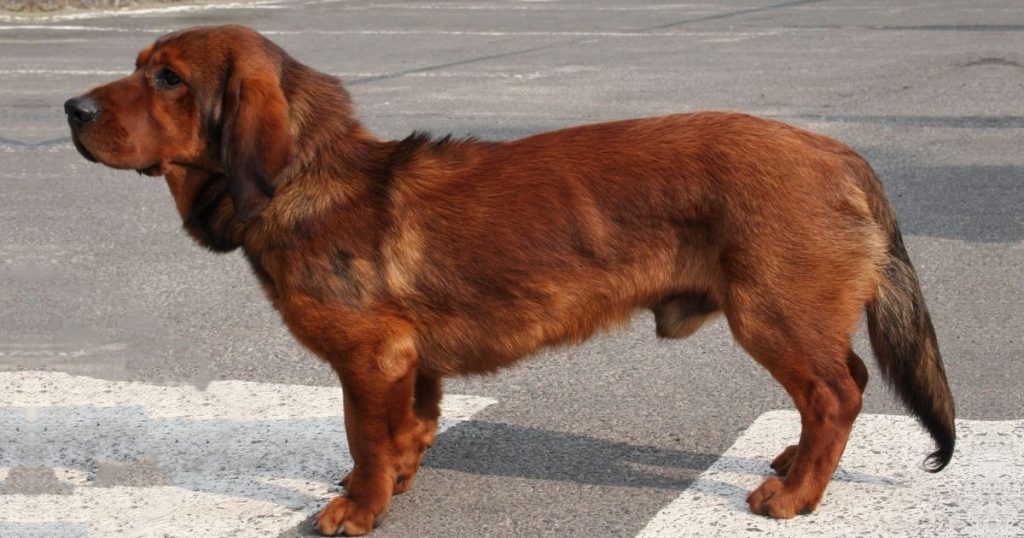
| Dog Breed Group | Scent Hound |
| Height | 13 to 16 inches |
| Weight | 33 to 40 pounds |
| Coat | Dense, short, smooth |
| Color(s) | Dark red |
| Life Expectancy | 10–12 years |
| Temperament / Behavior | Fearless, friendly, intelligent |
| Origin | Austria |
| Bred For | Hunting |
| Nickname(s) / Other Name(s) | Alpenländische Dachsbracke |
| Recognized by the FCI and UKC | Yes |
Alpine Dachsbracke Characteristics
| Characteristics | Rating |
|---|---|
| Adaptability | 4/5 |
| Friendliness | 3/5 |
| Kid-Friendly | 2/5 |
| Pet-Friendly | 3/5 |
| General Health | 3/5 |
| Grooming Needs | 2/5 |
| Trainability | 4/5 |
| Intelligence | 4/5 |
| Playfulness | 3/5 |
| Exercise Needs | 3/5 |
| Energy Level | 4/5 |
| Tendency to Bark | 3/5 |
| Tendency to Drool | 1/5 |
| Tendency to Snore | 1/5 |
| Tendency to Dig | 3/5 |
Interesting facts about Alpine Dachsbracke Dog Breed
Fact #1: Alpine Dachsbracke is a scenthound
Scenthounds have sharp noses, much stronger than other dogs and animals.
Unlike sighthounds who rely on their eyes to hunt, scenthounds use their noses.
Their keen sense of smell helps them track down prey their masters would not have found alone.
The Alpine is a good scenthound who tracked down wounded animals like deer after their masters got a hit.
Most prey tends to run off, even when injured. The Alpine tracks these stubborn ones down.
Fact #2: The United Kennel Club has recognised this breed.
Many Kennel Clubs haven’t recognized this breed and set a standard for it. The American Kennel Club, for example, hasn’t given the Alpine any standards.
However, a few have. The first was the Fédération Cynologique Internationale.
After that, the United Kennel Club recognized the Alpine Dachsbracke.
Fact #3: They stayed side-by-side with Aristocrats
Austrian Nobles took a particular liking to this breed. In fact, Alpine dogs were bred in the early 1800s to hunt with the high class.
Up until the 20th century, they were reserved for the top class.
Royals like Prince Rudolf of Habsburg owned many Alpines who accompanied him during hunting expeditions.
Fact #4: They are low shedders
If you’re not one who appreciates having dog fur all over your yard or property, you would like this particular fact.
Alpines are low shedders and have a low maintenance level.
This doesn’t mean they don’t shed. Shedding is normal for every dog, and you are bound to encounter some dog fur.
However, they don’t shed as much as breeds like the Afghan Hound.
Fact #5: Alpine Dachsbracke is a rare breed
In the United States and many other countries, the Alpine is not easy to find. This is partly because the Alpine is a young breed.
They originated in the 1800s, as opposed to many other breeds that have existed for centuries.
They haven’t had historical achievements either and were limited to a particular group of people till the 20th century.
Alpine Dachsbracke History & Origin
Alpines came from Austria in the middle years of the 19th century. The breeders had a goal when they set out to breed the Alpine.
They wanted a dog breed capable of picking up cold scents. The said breed should also be able to adapt to climate changes as it would be outdoors for long.
With a Daschund, an Austrian Black and a Tan Hound, the breeders got to work.
The result of their breeding was the Alpine Dachsbracke, a scenthound smaller in size than his relatives with short legs that’d enable him to get his nose to the ground.
The Alpine’s strong nose came from both the Austrian Black and Tan Hound. He also got his stamina and endurance from his two ancestors.
The choice of those two dog breeds to get the Alpine was significant.
Both the Austrian Black and Tan Hound are part of the Grand Brackes, all of whom have the ability to hunt and survive in mountainous areas.
His shortness, boldness, and hunting instincts were gotten from the Daschund, an excellent hunter.
Breeding the Daschund with the Austrian Black and Tan Hound enabled the breeders to get a dog breed with the best of all three. This is why the Alpine is formidable at his job.
By getting the best of three good breeds, the breeders got an exceptional dog breed that quickly got popular.
Royals like Prince Rudolf had teams of Alpines to go on hunting trips.
In the Western World, only the United Kennel Club recognized this breed. The American Kennel Club did not.
This may be one major reason why the breed is rare in the United States.
Alpine Dachsbracke Temperament, Behavior & Intelligence
While the Alpine Dachsbracke remains a hunter at heart and is often owned by hunters, they also make good household pets.
Their loving, fun, and entertaining nature draw the admiration of many pet owners who would love nothing more than to have one of these puppy-at-heart dogs.
The Alpine is intelligent, courageous, and enduring as well. These traits served him well as a hunter.
In modern homes, they make him a good guard dog and watchdog.
They won’t hesitate to alert you of any disturbing sight and they don’t back down when they want to defend loved ones.
The Alpine was bred to be a hard worker and remains so today. Though smaller than most hunting dogs, they left their mark in old Austria.
If you’re a hunter, the Alpine is one of your best options for a hunting companion. They accompanied royalty, after all.
If you’re not a hunter, you need to figure out ways to keep the Alpine busy.
While they can remain inactive and sit indoors, they are outdoors dogs who can’t do without productive activities.
The Alpine is friendly with the family, flows with children, and can coexist with other dogs.
Some socialization is needed, but this breed is not inclined to pushing away other dogs.
However, they won’t hesitate to defend themselves if the dogs get aggressive. Their high prey drive makes them unsuitable for smaller pets.
Is an Alpine Dachsbracke a good family dog?
Alpines are playful, friendly, and loving with family members. They also draw from their strength and courage to be watchdogs and guard dogs.
While hunters go for them a lot even in our times, they cope well as family companions.
They are adaptable as well when their exercise need is met. They are not hyper as destroying your living quarters.
Rather, they remain inactive. Finding the right environment is less of a worry when you want an Alpine.
They have some challenges which you should consider if you want to have one as a pet.
However, these comical dogs make good family pets with enough love to give to everyone.
Are Alpine Dachsbrackes good with kids?
Alpines are kid-friendly dogs that get along with children. They love children just as much as they do adults and are always up for some game and fun.
They make good kid companions and would protect your children if need be.
Having said that, do not let your kid interact with the Alpine—or any dog—unsupervised.
While the Alpine is level-headed and can tolerate kids, it doesn’t mean accidents can’t happen. It is best to prevent than to deal with the aftermath.
Socialization is also necessary, both for your dog and your kids. Alpines should get accustomed to your children at a young age.
Kids, on their own part, should be courteous to the Alpine and avoid crossing boundaries.
Are Alpine Dachsbrackes good with other dogs and pets?
With proper socialization, Alpines can live with other dogs. They tend not to be aggressive and may even get along. Be careful, though, when you take them to a dog park. They don’t take bullying well and will fight back if threatened by other dogs.
It is not advisable for you to get an Alpine if you have smaller pets. Their prey drive is so strong, they may not be able to resist.
Male vs Female Alpine Dachsbracke Dog
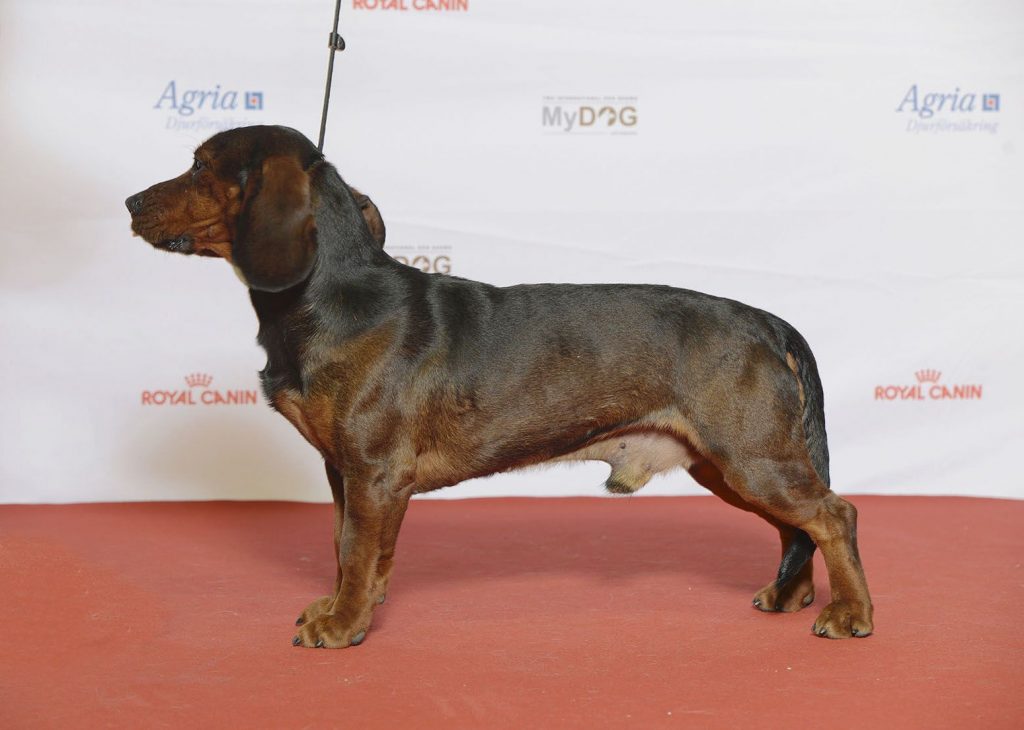
The Alpine, like other dog breeds, comes with two separate genders, male and female.
This is basic information, of course, but one that may come into play when choosing a pet.
All dog breeds have gender distinctions. For some, these distinctions are subtle and don’t matter at all.
Nothing would change if you decide to get the male or female of this breed. Making a choice in this category is easy.
For others, the difference is clear. The breeds under this category are sexually dimorphic, with the genders exhibiting different traits. The dilemma gets strong here.
The Alpine belongs to the first category. For starters, the male and female Alpine are similar in weight and height. They both weigh 33 to 40 pounds and grow up to 16 inches.
There is also no evidence of any personality difference between them. While we can gauge how each gender would act by looking at similar dog breeds, it is hard to know for sure.
Perhaps the only noticeable difference in the gender of this breed is the genitals.
While the female genitals stay within and can reproduce, the male sticks out and are visible.
Even this may not be a concern if you decide to neuter or spay your Alpine, a choice many pet parents go for.
Caring for an Alpine Dachsbracke
Taking care of a dog involves meeting his needs. Unlike humans who grow and become independent, dogs remain with you till they become seniors.
While we won’t exhaust every single need a dog has, here are some of the important needs.
Alpine Dachsbracke Food and Diet
With the Alpine, a rich meal is not up for debate. While some dog breeds can manage a poor meal, an Alpine may not be able to.
Make sure you have a good feeding plan before you scoop anything in their bowl.
The puppy Alpine is a growing dog. Keep that in mind while feeding them. They need nutrients like protein, calcium, and healthy fat to develop.
Calcium makes their bones strong and lessens the chances of hip dysplasia. Protein works on the muscles of the growing Alpine and fat help in energy.
Don’t feed your puppy human food and adult dog meals.
The puppy’s feeding ration can go as follows:
- 8 to 12 weeks: 4 meals in a day.
- 3 to 6 months: 3 meals in a day.
- 6 months to 1 year: 2 times in a day.
When the Alpine becomes an adult, 1.5 to 2.5 cups a day is enough to satisfy them. Learn to schedule their meals and keep to time.
This controls their feeding, prevents overfeeding, and is a form of training. It is up to you to manage the calories.
Alpines are generally not picky eaters and will overeat if you let them.
Senior Alpines are not as active as younger ones, so they need less carbohydrate and more protein for their muscles.
Calcium also helps prevent arthritis. They are more prone to obesity, so you need to be careful with them.
Alpine Dachsbracke Exercise
As hunters turned family companions, you can imagine how much exercise an Alpine needs. To keep them as active as their hunting days, exercise them on a regular basis.
Without exercise, an Alpine would get bored and fretful. He might go looking for his leash to communicate that he needs some exertion.
If he still doesn’t get the exercise, he may portray some annoying and destructive habits like excessive barking or biting furniture.
The Alpine requires 30 minutes to an hour of physical exercise. A good walk will be beneficial to them.
While outside, keep them on a leash and make sure they stay behind you, not in front. This communicates your position as leader of the pack.
They do need some off-leash activities, though. If you have a fenced yard, let them get some playtime by running around.
If you don’t have a yard, take them to the dog park to give them ample time and space to play.
Some other physical activities you could engage your Alpine on are:
- Jogging
- Hikes
- A hunt (if you’re a hunter)
A short walk is okay for an Alpine puppy. Puppies should be exercised too, but slowly.
Do not engage them in tough activities to avoid damaging their bones. The same rule applies to seniors who only need exercise to maintain body balance.
The Alpine Dachsbracke is not hard to train. Their hunting origin built their intelligence, an advantage as they learn fast and understand commands with ease. Too much repetition isn’t necessary for the Alpine.
While new owners can be successful in training the Alpine, the ideal owner is one with enough experience and confidence around dogs.
You can’t afford to be unsure or frightened around an Alpine. He’d pick up on that.
A healthy human-dog relationship is one where the human is in charge and the dog knows that. Anything other than that would cause problems.
Alpines tend to be stubborn and independent, a throwback from their hunting days on the mountains of Austria.
While they tend to go along with your training schedule, sometimes they will display stubbornness.
Punishments or harsh treatment will make them even more stubborn and antagonistic. You’d achieve training with a balance of firmness and gentleness.
The best time to start training your Alpine is as a puppy when he’s eager to learn. It is harder to break a bad habit off an adult Alpine than it is when he’s a puppy.
From that time, start setting some routines and regulations. Take him on some obedience training as well by teaching him how to do tasks and words he can easily memorize.
They also need to be socialized as they are sometimes reserved towards strangers.
Positive reinforcements should not be left out while training an Alpine. Use encouragements, praises, rewards, and other forms of motivation to get them to comply.
Alpine Dachsbracke Grooming Needs
Alpines are low-maintenance dogs with equally low grooming needs. They come with short, dense hair that needs some flea check and grooming that’s DIY friendly.
Their shedding is moderate on normal days. However, their dense coat makes them shed during some seasons.
Extra brushing is required during those periods to keep dead hair from flying over the place. Also, have a vacuum cleaner on standby to clear any stray fur.
This isn’t a breed you should bathe regularly. Dirt comes off their coat on its own. Bathing should be scarce, like once a year, and only when they get too dirty.
Other parts that need grooming include their teeth, nails, and ears.
Brush them regularly, like twice a day, and ensure that you get your vet’s approval on the toothpaste and toothbrush. Ditto for whatever ear cleaner you want to use for their ears.
Don’t let their nails get too long and uncomfortable before you cut them off.
You should have some experience before doing this, lest you injure your Alpine dog and make him run the opposite direction when he sees you with a nail cutter. If you don’t know to, hire the services of a groomer.
If you notice sores, an injury, red eyes, a bad smell, or any other unusual signs from your Alpine, don’t take it lightly.
Be sure it is not the symptoms of a bigger medical condition by taking him to the veterinarian.
Alpine Dachsbracke Health Conditions
Alpine Dachsbrackes were bred with the best genes. Not only did they get good qualities from these genes, but they also got good health and a relatively long life span.
While it isn’t as long as some other breeds, they stay alive for quite a while.
Nevertheless, they are not illness-free. They are vulnerable to a few conditions that you need to keep in mind if you want to own an Alpine as a pet.
Some of the health conditions that may affect the Alpine include:
Bloating
Bloating affects the Alpine due to their tendency to overeat and get obese. While it doesn’t seem like one, bloating is a serious condition and should be treated as an emergency.
Also known as Gastric Dilatation Volvulus, bloating happens when your dog’s stomach fills up with food, gas, and other fluids. It leads to a swollen stomach, a drop in blood pressure, and eventual death if untreated.
Hip dysplasia
Hip dysplasia is an inherited condition that happens when the joint gets loose.
Symptoms of hip dysplasia include abnormal movement, reluctance to move, and signs of pain. Your dog may prefer to lie around all day to avoid the pain.
You can prevent hip dysplasia by getting a puppy with a hip dysplasia-free record. Feeding a puppy with calcium nutrients helps too.
Treatments for this condition include physical therapy and weight control.
Frequently Asked Questions
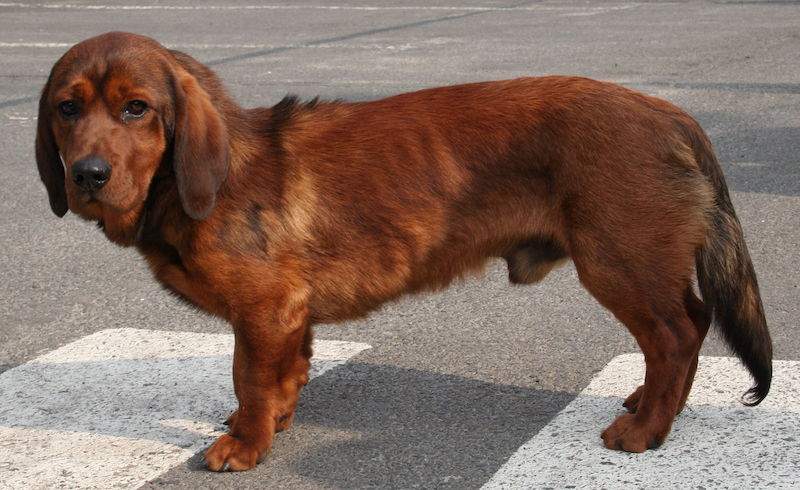
What is the scientific name for the Alpine Dachsbracke?
The Alpin Dachsbrackes’ scientific name is known as Canis lupus.
What are Alpine Dachsbrackes known for?
Alpine Dachsbrackes are scenthounds with a strong prey drive, well known for sniffing out cold trails. They locate prey with speed and can trace down an escaping or wounded game. Hunters still take them for hunting expeditions today.
How big is a full-grown Alpine Dachsbracke?
Alpine is a medium-size breed, smaller than what you’d expect from a scenthound. They weigh 33 to 40 pounds and grow as tall as 13 to 16 inches.
Do Alpine Dachsbracke like to cuddle?
While Alpines are friendly and affectionate with everyone in the family, they are hunters, not cuddle dogs. They can cope indoors after an exercise, but may not appreciate a cuddle
Is it hard to train and care for Alpine Dachsbracke?
Alpine Dachsbrackes have a short, dense coat that’s easy to maintain. They can be a bit challenging to train and exercise, but those are achievable as well. Taking care of them is not a daunting task, especially if you have the experience.
How long do Alpine Dachsbrackes live?
Alpine Dachsbrackes have a relatively long life span. Though not as long as some breeds, they live for a good number of years. They have a life span of 10 to 12 years.
How much do Alpine Dachsbracke Puppy cost?
Alpines are rare in America. Thus, they are expensive. A puppy costs between $500 to $700. Some may be higher.
Do Alpine Dachsbrackes shed?
Alpines are moderate shedders and you don’t have to worry about fur every month in a year. However, they do have shedding seasons.
Is an Alpine Dachsbracke right for you?
The Alpine Dachsbracke is a courageous, loving, and funny companion who is affectionate about his family and enjoys being with them. Far from being aggressive and fierce, they put their hunting skills into protecting those they love.
However, be sure you can handle the Alpine before getting one.
While they are not hard to maintain, they have some challenges like energy, stubbornness, high prey drive, and exercise needs. Alpine is right for you if you can rise up to the challenge.
To Wrap Up
Training and handling an Alpine Dachsbracke is a task that can be as challenging as pronouncing the name. Then again, what is life without some challenges?
This one is certainly worth the effort as being a pet parent is a rewarding experience.
What’s vital is that you get a dog breed you can handle. Also, consider adopting. Some baby Alpine Dachsbrackes need a home.
If you enjoyed this article on Alpine Dachsbracke dog breed facts and information, do explore other canines in this Complete Alphabetical List of Dog Breeds.
Helpful Resource:
- Alpine Dachsbracke Breed Standards
- FCI Profile: Alpenländische Dachsbracke

